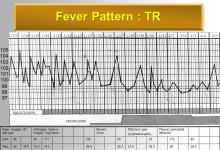Comorbidities in Rheumatoid Arthritis: A Precarious Stack of Blocks Save

Comorbidities can pile up like a stack of blocks for people with rheumatoid arthritis (RA). At the time when RA is diagnosed, they already have more comorbidities than their peers, and after RA diagnosis they accumulate comorbidities faster than their peers.
Almost all people with RA have a stack of comorbidities, with only about 10% having none or just one comorbidity and over half of people with RA having five or more comorbidities. In fact, comorbidities may play a bigger role in determining long-term outcomes for people with RA than seropositivity. People with seronegative RA often have even more comorbidities than similar people with seropositive RA.
A holistic, patient-centered approach to disease management for people with RA is necessary.
Isolating some manifestations of RA from the other comorbidities may be impossible for both the patient and the provider. When asked to provide a global assessment of arthritis, people with RA may struggle to determine whether their fatigue is part of their arthritis or a symptom of another comorbidity. Providers need to consider comorbidities when determining the best approach to treat the RA. Some RA therapies are contraindicated for patients with certain comorbidities. Also, so called “difficult to treat RA” (i.e., patients who have failed multiple RA therapies) can be intertwined with patient complexity due to multiple comorbidities, polypharmacy, and psychosocial situations including the interrelation between pain and mental health.
Due to the impact of RA on activities of daily living, people with RA can be consumed by dealing with their RA and may see their rheumatologist more often than their primary care provider. Preventive screening for cancers and optimal dosing of antihypertensives and statins may by ignored or deferred until the RA disease activity is better controlled. Additionally, steroids are often part of the treatment regimen for RA, but they come with increased risks for many other comorbidities.
Shoring up the stack of blocks is worthwhile and can have a positive impact on outcomes.
Four steps to shoring up the stack of blocks include 1) ensuring each existing comorbidity is receiving optimal management, 2) keeping up-to-date on preventive services such as immunizations and screenings to identify additional comorbidities early, 3) minimizing steroid use to reduce the risks of additional comorbidities, and 4) encouraging lifestyle changes such as weight management and smoking cessation.
These efforts can lead to improvements in many outcomes, not just living longer or avoiding hospitalizations, but also RA-specific outcomes like reducing flares and achieving remission. Where possible, rheumatology providers should pair with primary care providers to address these concerns in order to prevent or delay poor health outcomes (i.e., the toppling of the stack of blocks).











If you are a health practitioner, you may Login/Register to comment.
Due to the nature of these comment forums, only health practitioners are allowed to comment at this time.